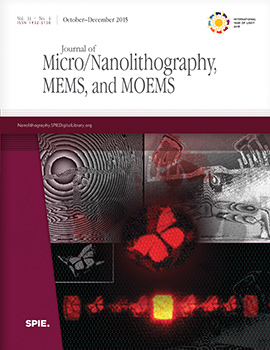Mitsuhiro Omura, Tsubasa Imamura, Hiroshi Yamamoto, Itsuko Sakai, Hisataka Hayashi
Journal of Micro/Nanolithography, MEMS, and MOEMS, Vol. 14, Issue 04, 044505, (October 2015) https://doi.org/10.1117/1.JMM.14.4.044505
TOPICS: Directed self assembly, Etching, Polymethylmethacrylate, Plasma, Carbon monoxide, Picosecond phenomena, Lithography, Ions, Plasma treatment, Chemistry
A dry development, directed self-assembly lithography (DSAL) hole-shrink process was studied, with a focus on the selectivity of the etching of poly(methyl methacrylate) (PMMA) over polystyrene (PS), and the suppression of etch stop. The highly selective etching of PMMA over PS was achieved using CO gas chemistry. However, it was found that the PMMA etching did not proceed beyond a certain depth. Scanning transmission electron microscopy and x-ray photoelectron spectroscopy analysis indicated that a deposition layer formed not only on the PS but also on the PMMA. The addition of H2 to the CO plasma was effective in controlling the thickness of the deposition layer and in suppressing the etch stop. The CO/H2 plasma process was combined with ion energy control to achieve a dry development for hole shrinkage. The dry development DSAL hole-shrink process was successfully realized by tailoring the etching gas chemistry and controlling the ion energy.



 Receive Email Alerts
Receive Email Alerts